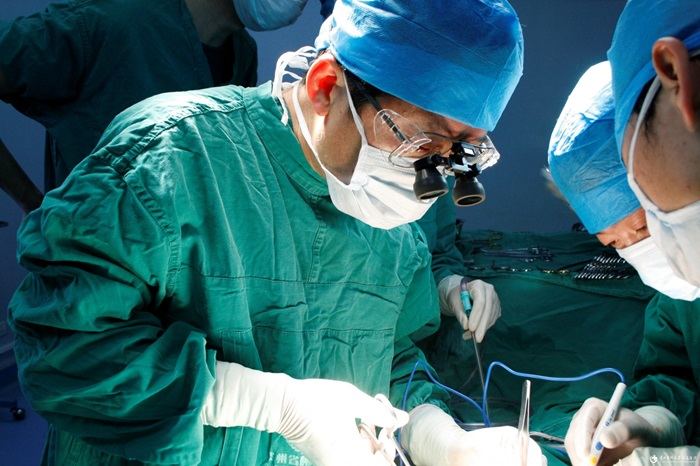Procedure Details
TURP is the most common surgical procedure for BPH. It involves the use of a resectoscope, which is inserted through the urethra. The resectoscope has a cutting loop that is used to remove the excess prostate tissue that is obstructing the urethra. The surgeon carefully shaves away the enlarged portion of the prostate, allowing for a better flow of urine. The removed tissue is then flushed out through the resectoscope.
Benefits and Recovery
One of the main benefits of TURP is its high effectiveness in relieving urinary symptoms. It can significantly improve urine flow and reduce the frequency of urination, especially at night. The success rate in improving urinary function is quite high. However, it does require a hospital stay, usually for a few days. Recovery time can vary, but most men can expect to have a catheter in place for a period of time, usually a few days to a week, to help with urine drainage as the urethra heals. Complications can include bleeding, infection, and in some cases, damage to the urethra or bladder, but with modern surgical techniques, these risks are relatively low.
2. Laser Prostatectomy
Types and Techniques
There are different types of laser prostatectomy procedures. For example, the GreenLight laser procedure uses a high – energy laser to vaporize the prostate tissue. The laser energy is delivered through a fiber – optic cable inserted through the urethra. Another option is the Ho:YAG laser, which can be used to either ablate (destroy) or enucleate (remove in one piece) the prostate tissue. These laser techniques offer more precision than traditional TURP in some cases.
Advantages and Considerations
Laser prostatectomy often results in less bleeding during the procedure compared to TURP. This can lead to a shorter hospital stay and potentially a quicker recovery. The precision of the laser can also reduce the risk of damage to surrounding tissues. However, like any surgical procedure, it has its own set of potential complications. There is a possibility of urethral strictures (narrowing of the urethra) developing over time, and some men may experience a recurrence of BPH symptoms, although the rate of recurrence may vary depending on the type of laser procedure and the individual patient’s characteristics.
3. Transurethral Incision of the Prostate (TUIP)
How It Works
TUIP involves making a few small incisions in the prostate gland through the urethra. These incisions relieve the pressure on the urethra caused by the enlarged prostate, allowing for better urine flow. The procedure is less invasive than TURP as it doesn’t involve the extensive removal of prostate tissue. Instead, it aims to create more space for urine to pass through by cutting through the constricting bands of tissue within the prostate.
Suitability and Outcomes
TUIP is a good option for men with smaller – to – moderately sized prostates and less severe BPH symptoms. It can provide significant improvement in urinary flow and is associated with a relatively quick recovery. The hospital stay is usually shorter than for TURP, and the risk of complications such as bleeding and damage to surrounding tissues is also lower. However, its long – term effectiveness may not be as high as TURP or laser prostatectomy for more severe cases of BPH.
4. Open Prostatectomy
When It’s Necessary
Open prostatectomy is a more invasive surgical option and is usually reserved for men with very large prostates or those with complex anatomical issues that cannot be addressed with other less invasive procedures. It involves making an incision in the lower abdomen or between the scrotum and anus to directly access and remove the enlarged prostate tissue. There are different types of open prostatectomy, such as the retropubic and suprapubic approaches, depending on the location of the incision and the surgical technique used.
Risks and Benefits
The main benefit of open prostatectomy is that it can effectively remove a large amount of prostate tissue, providing good long – term relief of BPH symptoms. However, it comes with a higher risk of complications due to the more invasive nature of the surgery. These can include significant bleeding, longer hospital stays (usually a week or more), a more extended recovery period, and a higher risk of infection and other postoperative problems.
5. Robotic – Assisted Prostatectomy
The Role of Robotics
In robotic – assisted prostatectomy, the surgeon uses a robotic system to perform the operation. The robotic arms are controlled by the surgeon and can provide enhanced precision and dexterity. The system offers a 3D view of the surgical field, allowing for more accurate dissection and removal of the prostate tissue. The procedure is typically done through a minimally invasive approach, similar to laparoscopic surgery.
Advantages and Future Outlook
Robotic – assisted prostatectomy can result in less blood loss, shorter hospital stays, and potentially a quicker recovery compared to open prostatectomy. It also allows for more precise surgical maneuvers, which can be beneficial in preserving the surrounding structures such as the nerves and blood vessels. However, it requires specialized training for the surgical team and is a more expensive option. As technology continues to advance, robotic – assisted procedures are likely to become more refined and may play an increasingly important role in the treatment of prostatic enlargement.
Conclusion
The choice of the best operation for prostatic enlargement depends on various factors such as the size of the prostate, the severity of symptoms, the patient’s overall health, and the surgeon’s expertise. Each of these five surgical options has its own set of advantages and potential risks. It’s essential for patients to have a detailed discussion with their healthcare providers to understand the benefits and drawbacks of each procedure and make an informed decision about the most appropriate treatment for their specific case of BPH.
Related topics
- The 8 Best Solutions For Prostatic Enlargement
- The 7 Best Homeopathic Treatments For Prostate Enlargement
- 5 Effective Home Remedies For Managing Prostate Enlargement


